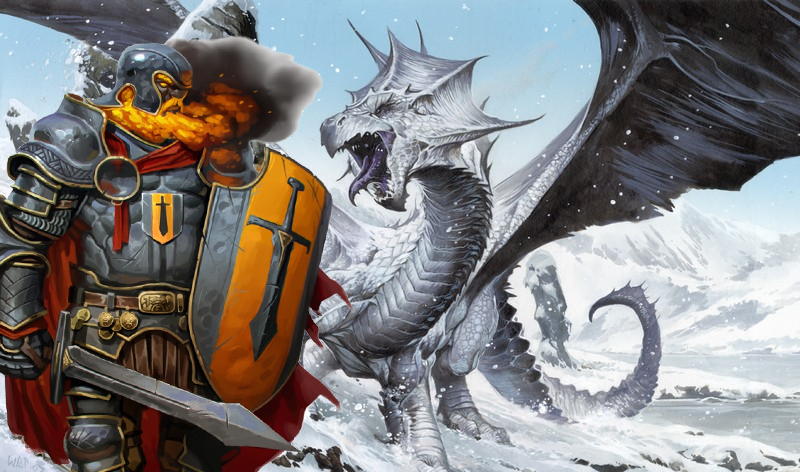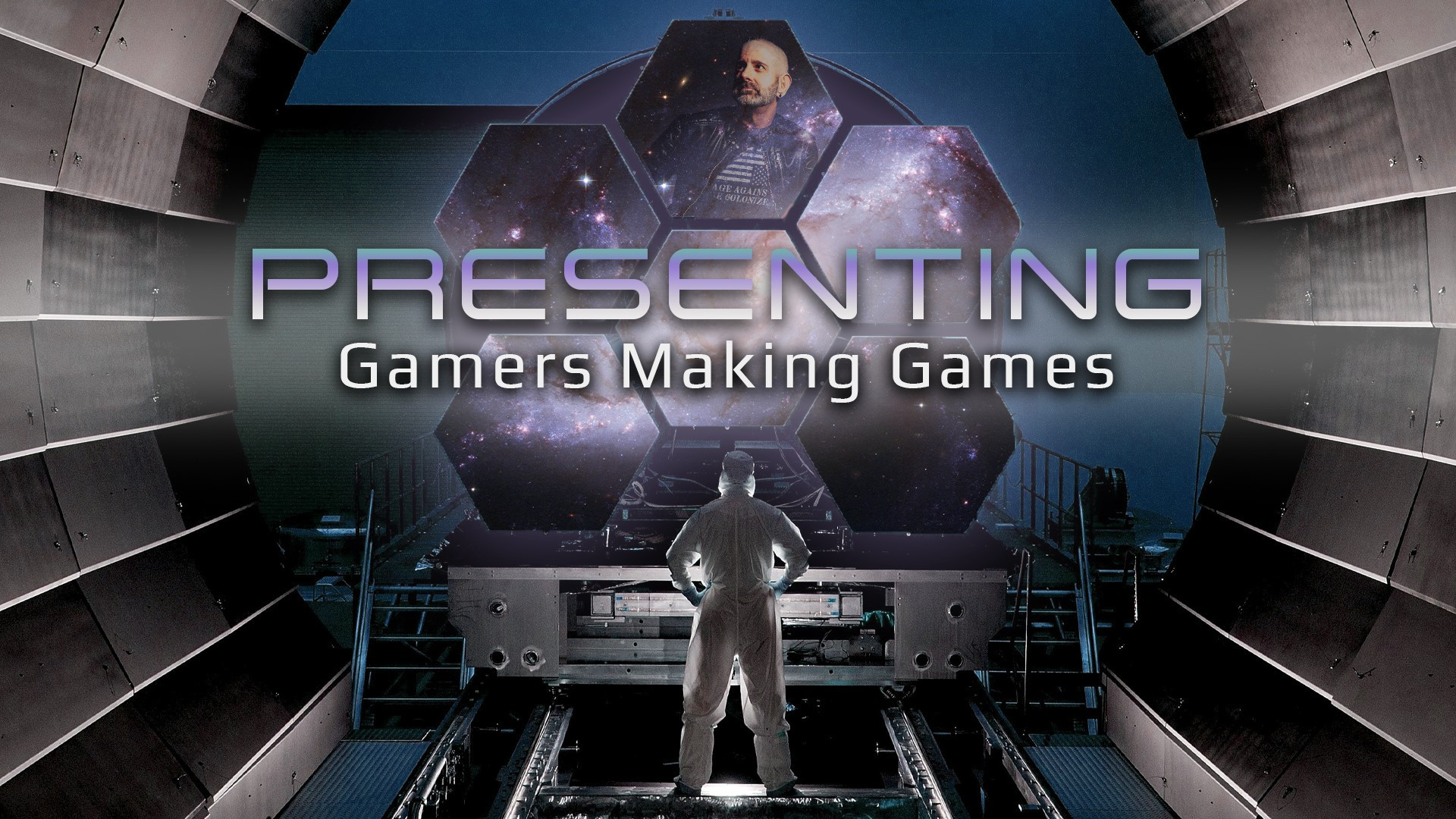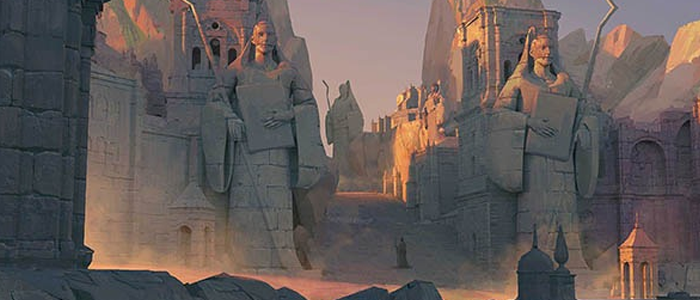Sometimes, what isn’t described in lore is as important as what is described. Not only are the holes the places we can make our own, but they often can be the springboard for adventure ideas that you never would have thought of in the first place. That’s where we start this week: embracing contradictions.
Patchwork Quilts
The nature of Golarion is that it is designed by many people over a long span of time, and grew organically as it needed to, much like our own games and campaigns do. Today, there is a lot of material that we can draw on, but there are still so many gaps that a GM can fit just about anything they want into the spaces between the existing stories.
There are also the occasional incongruities or contradictions. Sometimes these are changes over time, such as the nation of Lastwall from First Edition becoming the Gravelands in Second Edition – campaign events occurred to make the change, and these are spelled out in the lore. Other times, though, it’s more likely just the nature of a multi-author work, where creative minds went in slightly different directions. For example, for a few years there was “canon confusion” about exactly which Absalom pub the Pathfinder Society was founded in, or the proper spelling of Venture-Captain Drandle Dreng’s name (or is it Drendle Drang?). Still, these are easily figured out: either they get clarified officially, or you just pick one and go with it without much consequence.
Then there are situations where there are incongruities or actual contradictions in the canon. While these are pretty rare in my experience, I’ve found that when they occur they can be wonderful tools for dragging me out of a rut and into a new direction when creating content for my players.
An example (sanitized because I hope the real situation will appear in a future “Young and Adventurous” session): one product details an NPC who is based around a certain energy type, while another product details that NPC’s lair, but bases it around an opposite energy type. For this discussion, imagine a fire giant king described in the one product, and their location being defined as a glacier populated by yeti and a white dragon, as our example.
It would be easy enough to just say that one is a mistake, and to just to make the call and move on. It’s your game, after all, and so you can alter anything you need in the name of the game. The only downside with this approach, is that the lore that players already know from canon sources won’t necessarily make sense with the change.
(Sidebar: I should say, I use a different approach when dealing with character vs. player knowledge when it comes to lore. In most cases, I let players use any setting material or lore that they know as in-character knowledge unless it totally contradicts the character. There’s no point in having a backstory if no one knows it, and the same goes for NPCs and adventures. I still use the rules for identifying creatures in battle, but outside of combat I am pretty liberal with the players using whatever they have learned in-game.)
Embracing Contradiction
So, back to our fire giant living in a glacier. What situations could I envision that could lead to both elements of canon being correct?
Well, one or the other might be either rumor or old information. Perhaps the glacier was inhabited by yeti and a white dragon, and the fire giant went there and defeated them and is still there, searching the dragon’s horde for a specific item? Or maybe the glacier is atop an inactive volcano, and the fire giant is deep below, while the yeti and dragon live in the high peaks? Either of those would work, and are fairly straightforward, and yet give us more than just the standard “fire giant lair”.
Or perhaps, the fire giant was there first, and is now imprisoned or besieged by the dragon and its yeti minions? What could the fire giant have that the yeti need? Or did the fire giant kill the dragon’s mate, and this is just a case of cold revenge? Many possibilities emerge here as well.
Perhaps something farther outside the box could work. Maybe the fire giant is a reincarnated or polymorphed ice creature, determined to remain in their home despite the challenges. Or the yeti and fire giant have some reason to cooperate, some plan that might hint at an even bigger boss behind it all. Or maybe it’s the location that is important, and the two groups are either competing or cooperating for the benefits it bestows.
Any of these options give you an adventure that is much different than if the setting and NPC made sense. If it was a fire giant in a volcano, that would be pretty obvious. White dragon, yeti, and glacier – similarly obvious. By embracing the contradiction, our creative process takes us away from the norm and perhaps out of our comfort zone.






